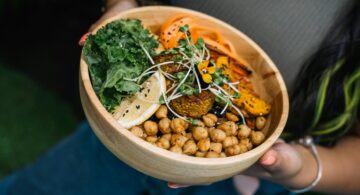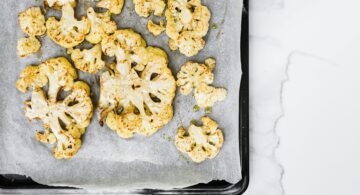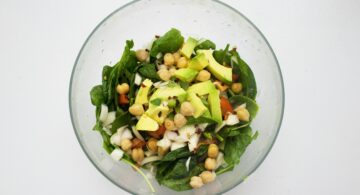The Science of Cooking: Keep the Nutrients in Your Food
How to Cook Your Food Without Losing Priceless Nutrients
Did you know that heat from cooking can breakdown 15 to 30 percent of vitamins in your vegetables? Boiling steals another 10 to 20 percent, including up to 15 percent of minerals, according to ConsumerReports.org.
It’s true that some amount of breakdown is good, such as in the case of eggs. When cooking eggs, a process called denaturation happens. When heat is applied to an egg, the egg proteins unfold, bump into each other and then bind together. You can watch this happen as egg whites turn solid.
If it weren’t for this protein “breakdown” process, the avidin protein (found in raw eggs) would bind to the B vitamin biotin during digestion, causing it to be unavailable for absorption. Biotin is good for energy production and essential for healthy nails, hair and skin. Cooked eggs, particularly the yolks, are excellent sources of this vitamin.
Similarly, when cooking tomatoes, the heat breaks down strong cell walls, making more lycopene available. The nutritional breakdown gives your body a chance to access and absorb more of this phytochemical with antioxidant properties. Lycopene is a naturally occurring pigment linked to the prevention of cancer and other chronic diseases.
However, this is not always the case. Many other foods lose much of their healthy nutrients when cooked too long on high heat or in water.Foods high in water-soluble vitamins, like vitamin C and B, are most vulnerable to losing nutrients when cooked, while fat-soluble vitamins are often better preserved.
Water soluble vitamins “leak” from foods when they come into contact with water. This is clearly visible when boiling beetroot or green vegetables. Any contact with water will reduce the water soluble vitamin density of a food, including when washing them, but losses become significant when heat is added.
While eating a mostly raw food diet would eliminate this issue, it’s not possible for many people. The cold, hard-to-digest nature of raw foods puts a damper on their body’s digestive fires.
Luckily, you don’t have to go on a raw diet to get the most from your foods. While cooking will always destroy some nutrients, you can modify how you prepare your food to preserve as many vitamins and minerals as possible and keep your food vitamin packed.
To do so, you need to minimize one or more of three things every time you cook—
- Temperature
- Time
- Amount of water
All of these things leech vitamins and break down nutrients from your foods. Reducing these factors allows you to lock in both flavor and nutrition, preserving their disease fighting potential.
Various cooking styles allow you to minimize these factors. See which ones are best and worst for your foods.
Steaming
Best for minimizing time and amount of water needed
Steaming is the best way to maintain nutrients in nearly all vegetables. Why? Because the food isn’t immersed in water (which leeches vitamins), or exposed to high heat in a pan (which breaks them down). This cooking method allows you to maintain the natural crunch and flavor as well.
The key to making your food nutritious and delicious with this cooking method is enhancing the ingredients after they’re cooked. Use dips, vinegars, seasonings or sauces to make your steamed veggies come to life.
Tip: If you don’t have a steamer, create your own by putting a small amount of water in the bottom of a pan. Place a colander on top, add the ingredients to the colander, and then cover with a pan lid.The best foods for steaming are high in fat-soluble vitamins A, E, D and K:
- Carrots
- Broccoli
- Cauliflower
- Zucchini
- Potatoes
Try Steaming
Simple Cruciferous Side Dish – 1 serving
Ingredients:
- 1/2 cup broccoli
- 1/2 cup cauliflower
- Salt, pepper, garlic powder (to taste)
- 1 tablespoon red wine vinegar
Directions:
- Chop broccoli and cauliflower into small florets and cook them in your steamer.
- Remove after 8 to 10 minutes and place in a bowl.
- Top with salt, pepper, garlic powder and red wine vinegar.
- Mix and serve with the protein of your choice.
Sautéing
Best for minimizing amount of water needed
Sautéing is one of the most popular ways to cook because you can create a delicious dish quickly and easily. However, sautéing your vegetables for too long, in an extremely hot pan, strips your foods of their nutrients.
Still, you can maintain most of the nutrition in your foods if you adhere to a few simple rules:
- Use pans that are wide, rather than tall, which allows every item in the pan to cook at the same time. This way, you don’t overcook some ingredients (losing most of their vitamins and minerals) and not others.
- Remove all moisture from your foods. Moisture will cause them to steam rather than sear in the pan, requiring you to leave them in for longer.
- Add food to the pan when it’s already hot, reducing the time the food needs to be in the pan.
- Keep a close eye on the pan so you can remove foods from the heat immediately when they’re done.
The best foods for sautéing don’t need a lot of time to cook thoroughly:
- Bell peppers
- Onions
- Mushrooms
- Chicken
Try Sautéing
Quick Chicken and Veggie Tacos – 1 serving
Ingredients:
- 1 small chicken breast
- 1/2 cup bell pepper strips
- 1/2 cup onion, sliced fajita style
- 1/4 cup black beans
- 1 tablespoon taco seasoning, split
- 1/2 cup salsa, split
- 5 tablespoons olive oil, split
- 1 or 2 corn tortilla(s)
- Salt and pepper to taste
Directions:
- Wash chicken and rub with 1/2 tbsp. olive oil, 1/2 tbsp. taco seasoning and salt and pepper to taste. Set this aside.
- Add the rest of the olive oil to your pan, let sit for 2 to 4 minutes, depending on how fast your stove heats.
- Add the bell pepper and onion, along with the rest of the taco seasoning and salt and pepper to taste.
- Let cook for 5 to 7 minutes, add half the salsa and cook for another 2 to 3 minutes.
- Remove vegetables and put your chicken in the pan—cooking it after in the same pan will provide extra flavor from the vegetables and ensure the pan is hot enough to cook quickly.
- Cook 3 to 5 minutes on each side, remove and cut into strips.
- Keep the pan hot to heat your corn tortilla; just 1 to 2 minutes on each side.
- Top the corn tortilla with chicken, vegetables and the rest of the salsa.
Braising
Best for minimizing temperature
Braising (frying lightly and then stewing slowly in a closed container) is a great way to impart a huge amount of flavor using low temperature. While it does require cooking in liquid, which tends to leech nutrients from foods, you can use that liquid in the final dish, ensuring that you still get the benefits.
When cooking meats, for example, this liquid will contain amino acids and proteins from the dissolved gelatin. These nutrients support bone health and aid in liver detoxification.
This style of cooking also creates tender meats and perfectly cooked vegetables, which makes your final dish even more delicious.
The best foods for braising can stand up to the hot liquid for long periods of time:
- Beef
- Chicken
- Apples
- Brussels sprouts
- Root vegetables
- Squash
Try Braising
Braised Beef and Onions – 8 servings
Ingredients:
- 2, 2-lb. boneless beef chuck pot roasts
- 2 teaspoons allspice
- 2 teaspoons salt
- 1 teaspoons pepper
- 5 lb. onions
- 6 large garlic cloves, chopped fine
- 2 tablespoons fine chopped parsley
- 5 cups dry red wine
- 1 cup beef stock
Directions:
- Preheat oven to 400 degrees, pat meat dry and cover with a mix of allspice, salt and pepper.
- Put half of the onions and garlic in a 13- by 9-inch roasting pan, arranging the meat on top. Place the remaining onion and garlic over the meat.
- Fill the pan with red wine and stock, cover with tin foil and braise for 2 hours, turning the meat after 1 hour.
- Remove meat from the pan, let rest, and serve topped with pan juices. You can also make a beef gravy using this recipe from The Food Network.*
Note: To get a thick, crunchy crust on your meat, sear it quickly in a pan before braising.
While some foods are more nutritious after being cooked, such as tomatoes, it’s more common that foods lose their nutrients. By reducing their exposure to high heat, eliminating water, and decreasing time, you can still enjoy cooked foods without breaking down quite as many vitamins and minerals.
Just remember that if you start with plenty of fresh vegetables and are reasonably careful in their preparation, you will receive a sufficient supply of all the nutrients they provide.
Now head to your kitchen and experiment; see how you can make your favorite foods both delicious and nutritious.
If you liked this article, then you’ll love these:
*Adapted from Epicurious




























